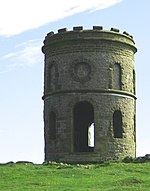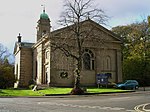Buxton Community School
Buxton Community School is a coeducational secondary school and sixth form located in Buxton, Derbyshire, England. The school was officially opened on 19 October 1993 achieving the consolidation of four former Buxton schools on the site of the previous Buxton College. The school is a specialist sports college. The headteacher is Sam Jones.In 2010 an Engineering Centre was added to the site and was officially opened by The Duke of Devonshire on the 13th October. A 3G artificial all-weather grass pitch was a further addition in 2012 and this opened by Howard Webb MBE. Previously a voluntary controlled school administered by Derbyshire County Council, in June 2023 Buxton Community School converted to academy status. The school is now sponsored by the Embark Federation. Academies have more autonomy with the National Curriculum and receive direct funding from the UK Government.
Excerpt from the Wikipedia article Buxton Community School (License: CC BY-SA 3.0, Authors).Buxton Community School
College Road, High Peak Fairfield
Geographical coordinates (GPS) Address Phone number Website External links Nearby Places Show on map
Geographical coordinates (GPS)
| Latitude | Longitude |
|---|---|
| N 53.2508 ° | E -1.9217 ° |
Address
Buxton Community School
College Road
SK17 9EA High Peak, Fairfield
England, United Kingdom
Open on Google Maps










